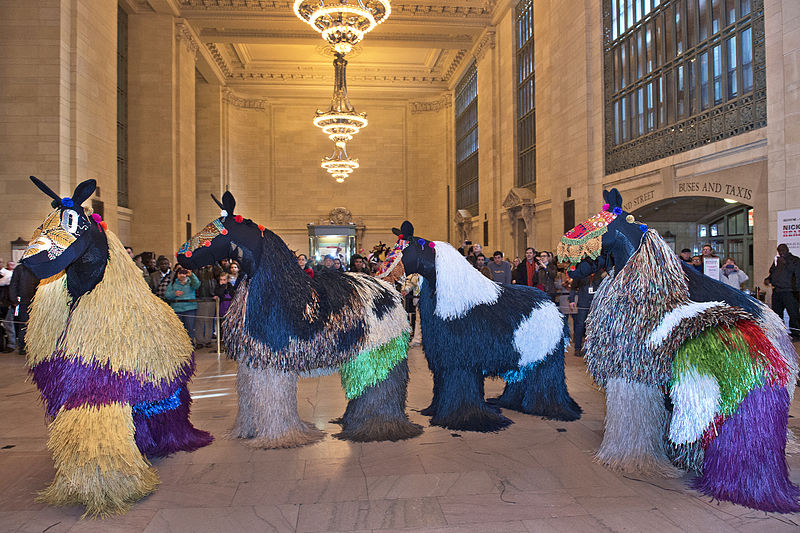In the first of several creations, American artist Nick Cave constructed a full body suit of small found twigs as a response to Rodney King’s beating. The once-strewn twigs fell in line with the black male identity: disregarded and degraded. The rustling sounds of the twig-suit when worn led Cave to the creation of future Soundsuits. Since the first, Cave’s Soundsuits have become increasingly ornate in details and vibrant in color. The visual element of his work draws upon African art and New Orleans’ Mardi Gras influences. While museums display the Soundsuits on mannequins, some of the intensely ornate, body-cloaking costumes are meant to be worn. In fact, Cave’s background as a trained dancer requires the presentation of these works in a new light: a performative one. The work derives its name from the sound produced when the suits are worn, often as a part of choreographed dances presented or projected in the gallery spaces. In an interview with the St. Louis Dispatch, Cave explains, “It takes time to establish a relationship with a piece…It’s about the shedding of the existing being. I’m interested in spirit and myth, and the space around the body.”
More information: Hyperallergic’s Interview with Nick Cave
Featured Image by Metropolitan Transportation Authority of the State of New York via Wikimedia Commons: https://commons.wikimedia.org/wiki/File%3AAFT_1758_(8593319770).jpg
Description provided on Wikimedia Commons Page:
On March 24, 2013, dancers who are part of the Heard-NY performances taking place from March 25-31 practiced in Grand Central Terminal.
Heard-NY features a herd of thirty large, peaceful, magnificent, and magical horses. The much-anticipated seven-day performance produced by MTA Arts for Transit and Creative Time actually consists of sixty dancers from The Ailey School inhabiting “Soundsuits” created by renowned artist Nick Cave.

